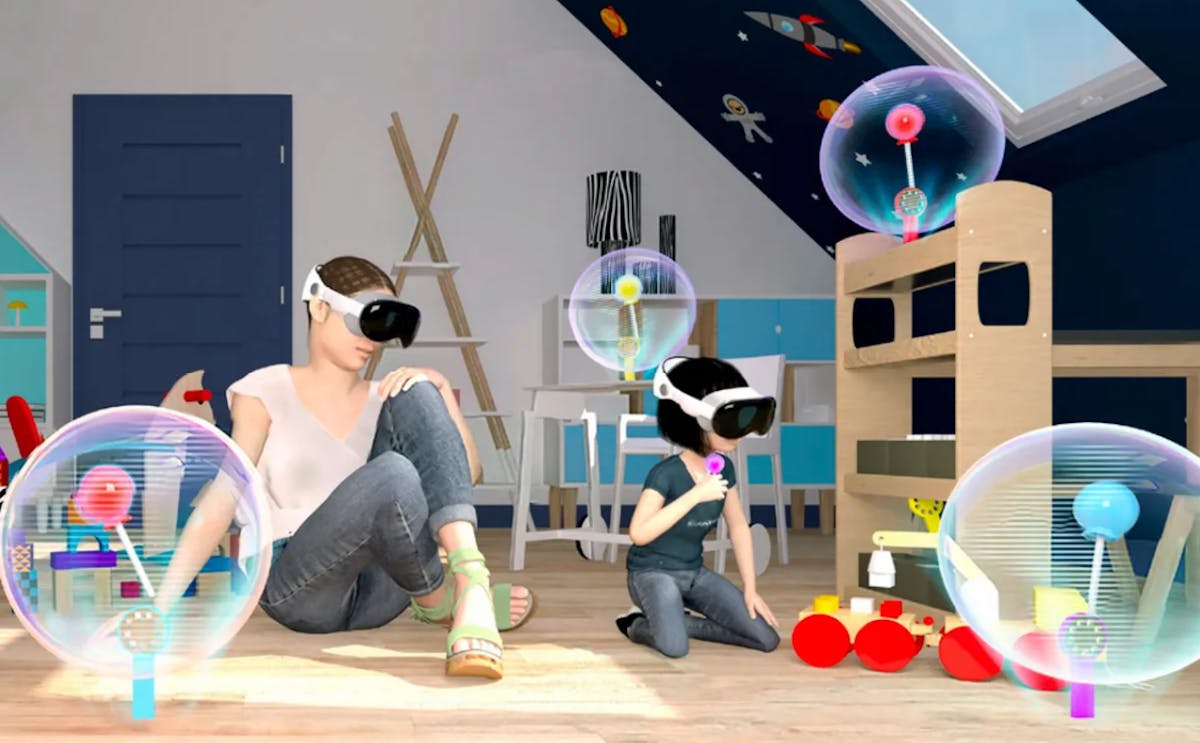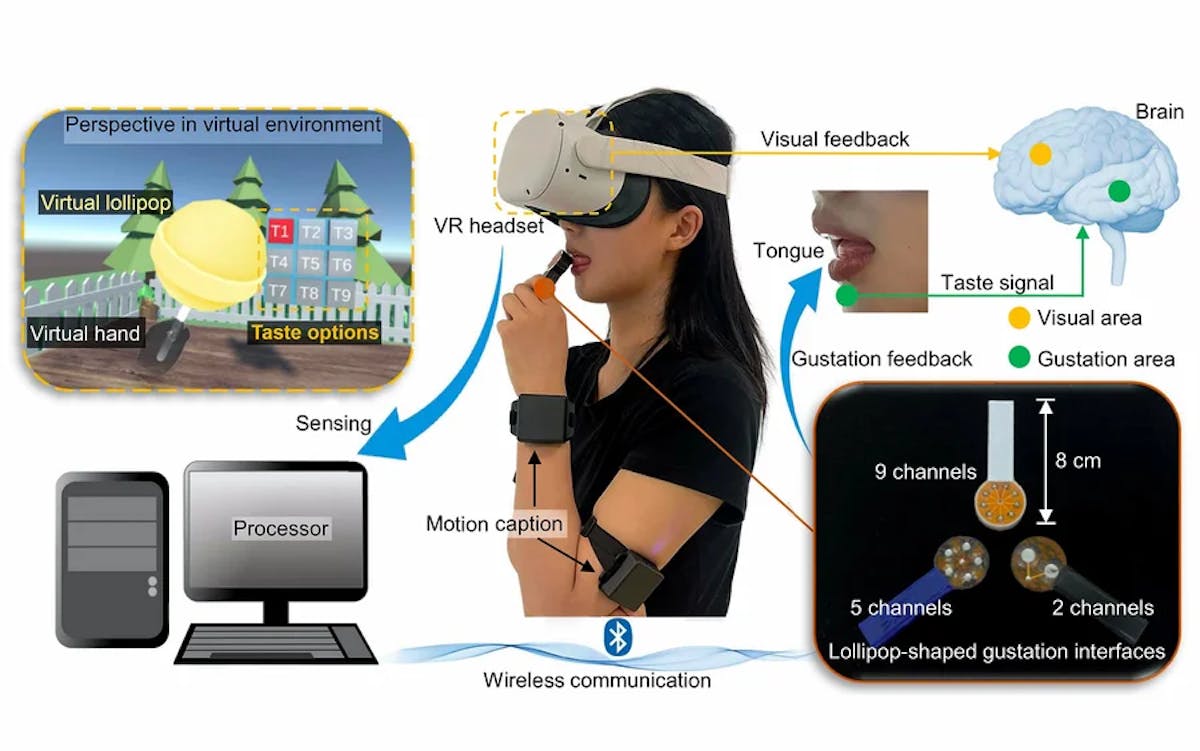A Taste of Things to Come
This lollipop-like device simulates nine tastes and seven scents to increase immersion in virtual reality experiences.

Virtual environments are becoming more and more immersive with the release of each new generation of virtual reality (VR) headset. Now that the pixel counts on their displays are sky-high, and the sound systems are in many cases top-notch, a very convincing visual and auditory experience can be produced, even with a very affordable unit. But the world is more than just sights and sounds, so that illusion can be quickly broken by what is still lacking — namely touch, smell, and taste.
While there is much yet to be done, a lot of research and development has been poured into building better tactile interfaces. It would seem to be just a matter of time before convincing and practical devices become widely available. Technologies designed to insert tastes and smells into virtual experiences are far less advanced, however. Fortunately for hardcore VR aficionados, a device that could help to fill this gap may be forthcoming, thanks to the work of a team led by researchers at the City University of Hong Kong. They have created a small, lollipop-like device that can stimulate the senses of taste and smell in virtual environments.

Much like a real lollipop, users hold the device by a stick and lick it. It can be programmed to deliver up to nine flavors, with the present device configured for sugar, salt, citric acid, cherry, passion fruit, green tea, milk, durian, and grapefruit flavors. It is impossible to fully decouple the senses of taste and smell, so the digital lollipop can also diffuse up to seven different odors into the surrounding air.
Tastes are delivered via food-grade chemicals that are embedded in an agarose gel. When a voltage is applied to the gel, a phenomenon called iontophoresis occurs, which transports the chemicals to the surface of the device. Larger voltages produce stronger flavors, whereas smaller voltages produce a subtle flavor. This is paired with a seven-channel odor generator to complete the effect. As opposed to electrostimulation devices that require borderline dangerous voltages, the lollipop safely operates at two volts and under.
Aside from enhancing VR experiences, the researchers believe that their device may eventually find uses in standardized gustation tests in healthcare or in virtual grocery stores, where users could taste test foods before making a purchase. As it currently stands, the device can only operate for about an hour before being reloaded with chemicals, which could be a pain for users. Aside from that, whether or not users will accept licking a plastic lollipop — and whether or not the nine flavors and seven scents can accurately reproduce a grocery store's worth of items — remains to be seen.
R&D, creativity, and building the next big thing you never knew you wanted are my specialties.

